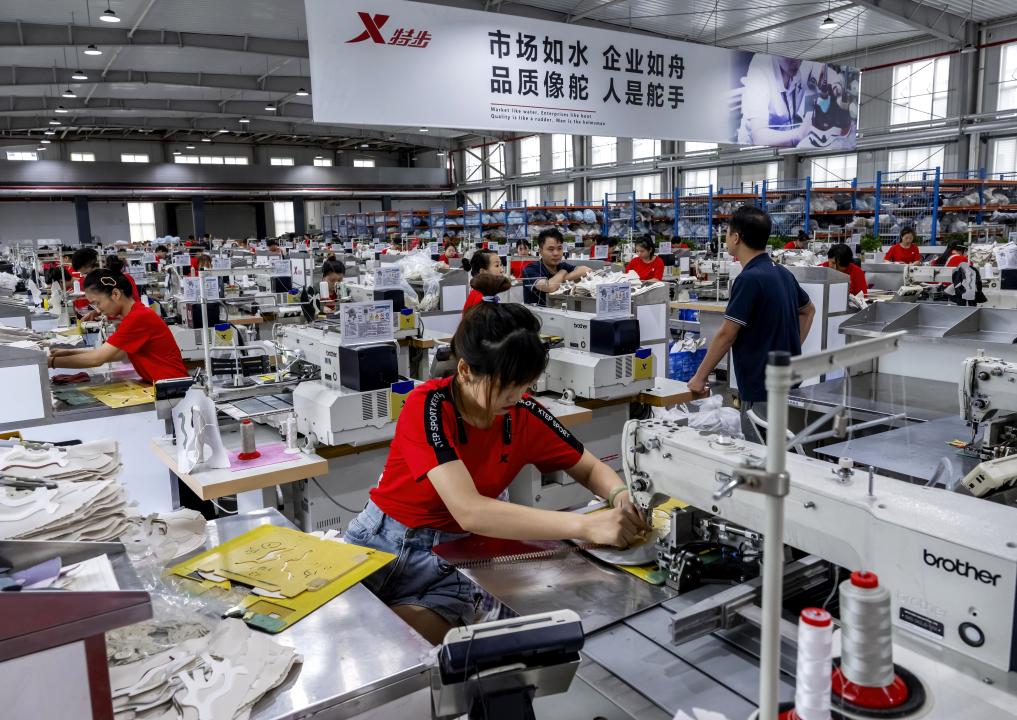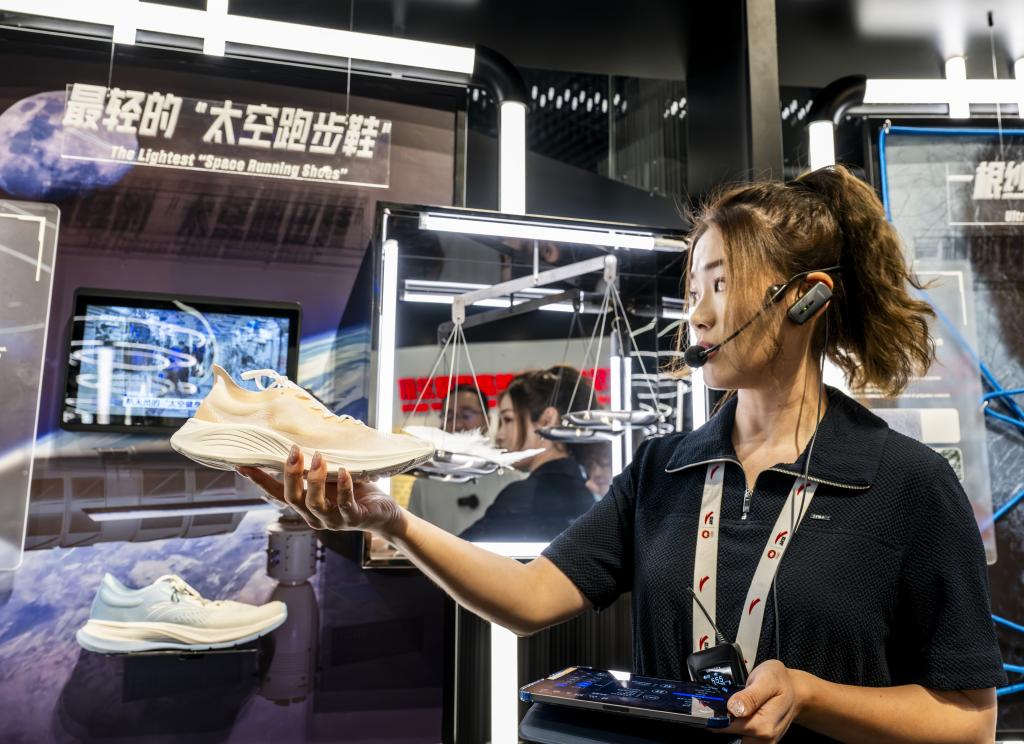




- BRNN
- BRI News
- BRNN News
- Database
Official Documents Polices and Regulations
Inter-government Documents International Cooperation BRI Countries
Business Guide Economic Data BRI Data
Trade
Investment Projects Latest projects
Cases - Content Pool
Chendai town in Jinjiang, southeast China's Fujian Province, produces over a billion pairs of sneakers annually, with the finished shoes' total output value exceeding 50 billion yuan ($6.88 billion). Globally, one in every five pairs of sneakers originates from this town.

File photo shows a street known for suppliers of shoe materials in Chendai town, Jinjiang, southeast China's Fujian Province, in the 1990s. (Photo/Xinhua)
Spanning just 38.8 square kilometers, Chendai is home to more than 7,000 shoe manufacturers and related firms, including prominent Chinese brands such as Anta, Xtep and 361 Degrees.
Local entrepreneurs have built the country's largest footwear industry cluster, leveraging a strong business spirit.
The town's journey started with its distinctive demographics: Many families had international ties, receiving remittances and imported shoes. During the 1960s and 1970s, when foreign shoes were scarce, locals began manufacturing their own footwear.
A pivotal moment came in 1979 when Lin Tuchiu, a resident of Yangdai village, converted his stone house into a factory. Alongside 14 villagers, each investing 2,000 yuan, they started a clothing and footwear factory with basic tools such as hammers, scissors and sewing machines. The shoes sold quickly, leading to the establishment of numerous small workshops across the town.
Zeng Shuixiang, a local official, attributed the footwear industry's growth to vacant homes owned by overseas Chinese, remitted funds and local labor.

Employees work on a smart production line for sneakers at Xtep, a prominent Chinese sportswear brand, in Chendai town, Jinjiang, southeast China's Fujian Province. (Xinhua/Wei Peiquan)
By the mid-1980s, the town had over 700 enterprises, with a total industrial and agricultural output of 110.27 million yuan.
As Chendai's reputation grew, international brands began outsourcing production to the town, securing lucrative contracts. However, the 1997 Asian financial crisis dealt a heavy blow. Many small manufacturers, who relied heavily on producing goods under contract for other brands, could not survive.
The crisis marked a turning point, prompting local businesses to shift their focus towards building their own brands. They began investing in design, material research, and e-commerce platforms. Today, the town is home to 421 large enterprises.
Advanced production lines are now commonplace in the town, with many companies establishing innovation labs. For example, Anta's sports science lab leverages technology to innovate sports shoes, supplying products to Chinese Olympic athletes and even astronauts.

An Anta Museum staff member showcases a "space running shoe" at Chendai town, Jinjiang, southeast China's Fujian Province, home to the Chinese sportswear giant Anta. (Xinhua/Wei Peiquan)
Xtep Group launched its X-lab in 2015, using 3D motion capture and sports biomechanics to drive innovation.
Over more than four decades, Chendai has transformed from a small fishing village into a global footwear manufacturing powerhouse.
Xu Zhuyun, head of the town, emphasized their ongoing focus on new materials, designs and intelligent manufacturing to maintain a competitive edge.

Tel:86-10-65363107, 86-10-65368220, 86-10-65363106